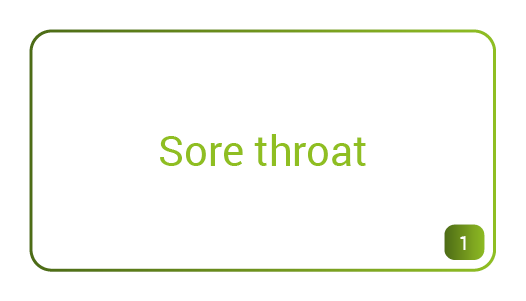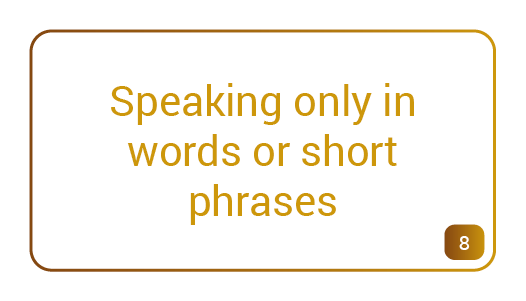Resources
Clinical Reasoning Game
Designed for medical students, pre-vocational doctors or GP registrars/RGs, the Clinical Reasoning Game helps you refine your diagnostic reasoning skills in a clinical setting – it’s interesting and engaging which will help retain vital skills and knowledge.
How it works
Number of players: As many as you like!
Aim: To practice diagnostic reasoning on random presentations to generate a broad list of differential diagnoses.
You can refine your differential diagnosis list as more cards are drawn and more information becomes available.
The game ends when it is no longer possible to explain all the information with a single diagnosis.
Purpose: Every player is a winner as they refine their diagnostic reasoning skills. There is no ‘right’ answer – the game is not competitive.
Tips
CHALLENGE YOURSELF
There are multiple approaches to diagnostic reasoning.
Trial different reasoning models to explore different styles of thinking, and to find potential blind-spots or biases in your thinking.
KEEP IT LOGICAL
It is possible to draw a combination of cards which do not make sense, usually due to a clash of the age or gender of the patient with a presenting complaint or observations.
For example:
- Demographics: 6-week-old male
- Presenting complaint: Fevers
- Initial observation: Talking in short sentences
If this happens, you can either consider a more appropriate similar presentation for the duration of the game e.g. consider “talking in short sentences” to mean “respiratory distress,” and proceed on this basis, or discard that card and draw another by clicking on the 2-way arrow icon beneath the card
Let's play!
Step 1 - Choose a demographics card
- To choose – click on the blue card
- Before choosing the next card, click the 2-way arrow icon
 (this shuffles the deck to ensure the cards are randomly selected)
(this shuffles the deck to ensure the cards are randomly selected)


Step 2 - Choose a presenting complaint
- To choose – click on the green card
- Before choosing the next card, click the 2-way arrow icon
 (this shuffles the deck to ensure the cards are randomly selected)
(this shuffles the deck to ensure the cards are randomly selected)


Step 3 - Generate a list of differential diagnoses using one of the reasoning models below
There are multiple approaches to diagnostic reasoning. We encourage you to explore different models of diagnostic reasoning, including the surgical sieve, the anatomical model and Murtagh’s PROMPT model.
ANATOMIC MODEL
Consider the body anatomically and think about pathology of any particular structure which could explain the information shown on the cards.
SURGICAL SIEVE
This reasoning model uses a mnemonic to prompt the clinician through a list of possible causes or types of conditions in an effort to aid recall of known diagnoses:
V – Vascular
I – Infectious or Inflammatory
N – Neoplastic
D – Drugs or degenerative
I – Intoxication or idiopathic
C – Congenital
A – Autoimmune or allergic
T – Trauma
E – Endocrine
M – Metabolic or mental
PROMPT
Also known as Murtagh’s Model, PROMPT follows a series of logical steps in considering a differential:
P. What is the probability diagnosis (what is most likely)?
R. What serious conditions must be ruled out?
O. What conditions are often missed?
M. Consider the seven masquerades (conditions which can be difficult to diagnose because of their many possible presentations):
- Depression
- Diabetes
- Drugs
- Anaemia
- Thyroid dysfunction
- Spinal dysfunction
- Urinary tract infection
T. Is this patient trying to tell me something?
Step 4 - Choose a general observation card
- To choose – click on the brown card
- Refine your differential diagnosis based on this additional information. This may mean discarding diagnoses or adding new ones.
- Before choosing the next card, click the 2-way arrow icon
 (this shuffles the deck to ensure the cards are randomly selected)
(this shuffles the deck to ensure the cards are randomly selected)


Step 5 - Choose a finding or results card
- To choose – click on the red card
- Further refine your differential diagnoses based on this new information.
- Before choosing the next card, click the 2-way arrow icon
 (this shuffles the deck to ensure the cards are randomly selected)
(this shuffles the deck to ensure the cards are randomly selected)


Step 6 - Find a single diagnosis which explains all the information present
- Repeat Step 6 until there is only one single possible diagnosis which explains all the information present, at which point the game ends.
- If there is no single possible diagnosis (leaving you to conclude that the patient must have two or more conditions to explain all the information gathered)… the game ends!
This resource, under the branding “Clinical Reasoning: The Game”, was originally created by GP Synergy with the support of the Australian Commonwealth Government under the AGPT Program.
To maximise accessibility, General Practice Supervision Australia (GPSA) has adapted The physical game to an online version under Intellectual Property rights granted in January 2023.
Date reviewed: 04 July 2025

